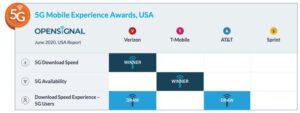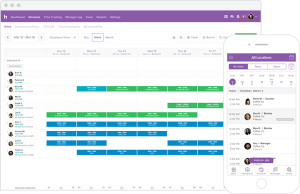The decision will boost the growth of the IoT and make affordable, multi-gigabit broadband available to more consumers.
Everyone on the leadership team at the Federal Communications Commission agreed that the US needs more Wi-Fi bandwidth, and the vote to open up 1,200 MHz of spectrum on the 6 Ghz band for unlicensed wireless use was unanimous.
Chairman Ajit Pai and all four commissioners mentioned the new demands on Wi-Fi due to the current coronavirus pandemic with the education, work, and healthcare all moving online suddenly in mid-March. The chairman even gave a shout out to watching “Tiger King” during the shutdown. They were all thinking about the future as well and the new products, services, and experiences that could take advantage of this new bandwidth.
Commissioner Brendan Carr said that the new bandwidth will spur innovation in virtual reality and augmented reality experiences in the classroom and in retail spaces, mentioning the long lines wrapping around the block at some groceries.
“Imagine if you could put on your VR glasses while sitting on your couch, and walk down the aisles at your local grocery store,” he said.
SEE: WI-FI 6 (802.11AX): A cheat sheet (free PDF)
Commissioner Jessica Rosenworcel described another lockdown phenomenon: schools parking buses equipped with Wi-Fi in parking lots around the country so that kids with no Internet connection at home can attend school.
“I recognize that with today’s decision, we made progress on the need to identify additional bands for unlicensed use so we can expand the democratizing force of having more Wi-Fi in more places,” she said.
Commissioner Geoffrey Starks said that this expanded Wi-Fi bandwidth is the perfect compliment to expanding 5G service and predicted it will spur the next generation of streaming content and gaming services.
Vijay Nagarajan, vice president of marketing for the wireless communications and connectivity division at Broadcom, praised Pai for a “perfectly balanced proposal designed to benefit all Americans.”
“This is the most substantive decision any Commission has made on unlicensed spectrum in almost 25 years and one that will empower our wireless experiences for the next 20 years,” he said.
Chuck Lukaszewski, vice president of wireless strategy and standards at Aruba, a Hewlett Packard Enterprise company, said this forward-looking action by the FCC will unleash the next 20 years of Wi-Fi innovation.
“The 6 GHz unlicensed spectrum band is the key to affordable, multi-gigabit broadband, and this decision is great for 5G offload economics,” he said.
Bob Friday, CTO of Mist Systems, a Juniper Networks company, said that as businesses start to move towards re-opening, he expects to see them leveraging Wi-Fi and indoor location services to provide their employees and guests with a safer environment.
Pai said this was one of the most complicated subjects that the commission has addressed from an engineering perspective and thanked the agency’s wireless telecom bureau and its office of engineering and technology for their work on the subject.
SEE: Wi-Fi 6: An insider’s guide (free PDF)
Bertram Lee, policy counsel at Public Knowledge, said the new rules protect existing organizations using the 6 GHz band while permitting innovation in wireless technology.
“Interference decisions are technical — not political — and the FCC has taken an appropriately cautious approach,” Lee said.
Edgar Figueroa, the president and CEO of the Wi-Fi Alliance said the organization enthusiastically supports this action and is grateful to the Commission’s leadership and FCC staff for their efforts.
Wi-Fi Alliance announced it is expanding Wi-Fi CERTIFIED 6 to include Wi-Fi 6E, ensuring interoperability in devices capable of 6 GHz operation. Analysts suggest more than 316 million Wi-Fi 6E devices will enter the market in 2021, with the first Wi-Fi 6E access points available as soon as Q4 2020.
Tony Werner, president of technology, product, experience at Comcast Cable, said the order making 1200 MHz of unlicensed spectrum available in the 6 GHz band will dramatically improve Wi-Fi performance and capacity, and will protect existing users of the spectrum.
Phil Solis, research director at IDC, said he expects initial Wi-Fi 6E products to enter the market this year, with the first Wi-Fi 6E access points available by the fourth quarter of 2020,
“We expect Wi-Fi 6E will gain momentum and see rapid 2021 adoption with more chipsets targeting flagship smartphones, PCs, TVs, and even VR devices,” he said.
Also see

Image: Jens Domschky/Getty Images/iStockphoto
Source of Article




